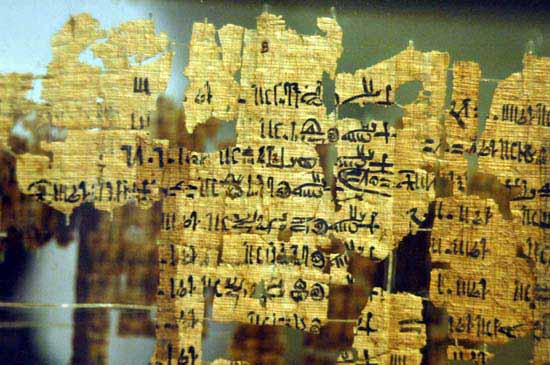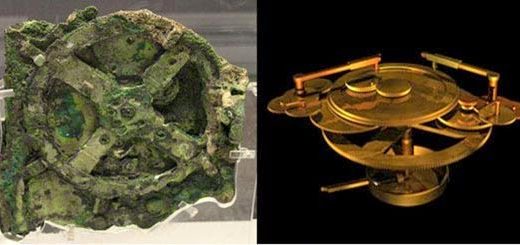Civilizations before history: Ancient Egypt and the Turin Papyrus

Similar stories to that of Ancient Sumer and their incredible King list can also be found in Ancient Egypt. There, according to ancient texts, we find mentions of beings sometimes referred to as gods or demigods. Mainstream historians on the other hand prefer to call them by other names such as heroes, but the truth goes far beyond heroes and ordinary mortals.
The Turin Papyrus also known as the Canon of Turin is another important ancient text. Even though it isn’t preserved completely it is an ancient text written in hieratic language. It is believed that the original list had over 300 names, detailing precisely the years, months and days of each reign of the kings that ruled over the lands of ancient Egypt. The papyrus is the most extensive list of kings available, compiled by the Egyptians, and is the basis for most chronology before the reign of Ramesses II.
The papyrus is divided into eleven columns, distributed as follows. The names and positions of several kings are still being disputed, since the list is so badly damaged.
Column 1 — Gods of Ancient Egypt Column 2 — Rows 1-10 Spirits and mythical kings Column 2 — Rows 11-25 (Dynasties 1-2) Column 3 — Rows 1-25 (Dynasties 2-5) Column 4 — Rows 1-26 (Dynasties 6-8/9/10) Column 5 — Rows 12-25 (Dynasties 11-12) Column 6 — Rows 1-2 (Dynasties 12-13) Column 7 — Rows 1-23 (Dynasty 13) Column 8 — Rows 1-27 (Dynasty 13-14) Column 9 — Rows 1-30 (Dynasty 14) Column 10 — Rows 1-30 (Dynasties 14-15) Column 11 — Rows 1-17 (Dynasties 16-17)
From the remaining pieces of this invaluable list, it is possible to establish nine dynasties belonging to the predynastic Pharaohs, among them are: the Venerables of Memphis’, ‘the Venerables of the North’ and, lastly, the Shemsu Hor (the Companions, or Followers, of Horus) who ruled until the time of Menes.
The final two lines of the column, which seem to represent a resume of the entire document are extremely interesting and remind us to the Sumerian King list. They read: ‘… Venerables Shemsu-Hor, 13,420 years; Reigns before the Shemsu-Hor, 23,200 years; Total 36,620 years’.
The Palermo stone is another ancient Egyptian document that has important information written on it. This stone is one of seven surviving fragments of a stele known as the Royal Annals of the Old Kingdom of Ancient Egypt. The stele contained a list of the kings of Egypt from the First Dynasty through to the early part of the Fifth Dynasty and noted significant events in each year of their reigns. Judging by the last king mentioned on the list, the reign should belong to that of Pharaoh Neferirkare (2,446 -. 2,426 BC), king of the V dynasty. The Palermo stone is only half of a huge slab of black diorite, which originally is believed to have measured approximately 2 meters in length and around 60 centimeters in height. It is currently displayed at the Museum of Palermo. In reality there are 7 pieces all together that are distributed in museums around the world. The document, in hieroglyphic writing, accounts for 120 predynastic kings who reigned before the ancient Egyptians officially existed as a civilization. Interestingly, the names of the mysterious “gods” and “demigods” appear in the Egyptian royal genealogies as well.
According to Eusebius of Caesarea, who was a Roman historian, exegete, and Christian polemicist of Greek descent, a dynasty of gods ruled Egypt for 13.9 thousand years: the first was god Vulcan, the god who discovered fire, after him Sosis of the Sun, Isis and Osiris of Saturn, Typhoon brother of Osiris, and Horus the son of Isis and Osiris. they were followed by a dynasty of heroes and demigods who ruled for 11,025 years. This makes it a total of 24.925 years of reign. Approximately around 3000 BC, the first “human” pharaoh would take rule as Egyptian pharaoh.
According to ancient texts, it seems that the official first pharaoh of Egypt is Menes, also known as Narmer, but some researchers believe that other pharaohs must have predated him. In fact it is known that prior to Menes other rulers were pharaohs of Egypt, the Scorpion Pharaoh and Pharaoh Ka.
As we can see, there are numerous ancient documents that speak of the history of ancient Egypt. For some reason, mainstream researchers have decided to ignore these ancient texts and have put forward their own chronology of ancient egyptian history.



 Creators of mankind
Creators of mankind Description of “Tall white aliens”
Description of “Tall white aliens” Where they came from?
Where they came from? About hostile civilizations
About hostile civilizations The war for the Earth
The war for the Earth “Tall white aliens” about eternal life
“Tall white aliens” about eternal life Video: “Nordic aliens”
Video: “Nordic aliens” Aliens
Aliens Alien encounters
Alien encounters The aliens base
The aliens base UFO
UFO Technology UFO
Technology UFO Underground civilization
Underground civilization Ancient alien artifacts
Ancient alien artifacts Military and UFO
Military and UFO Mysteries and hypotheses
Mysteries and hypotheses Scientific facts
Scientific facts


















